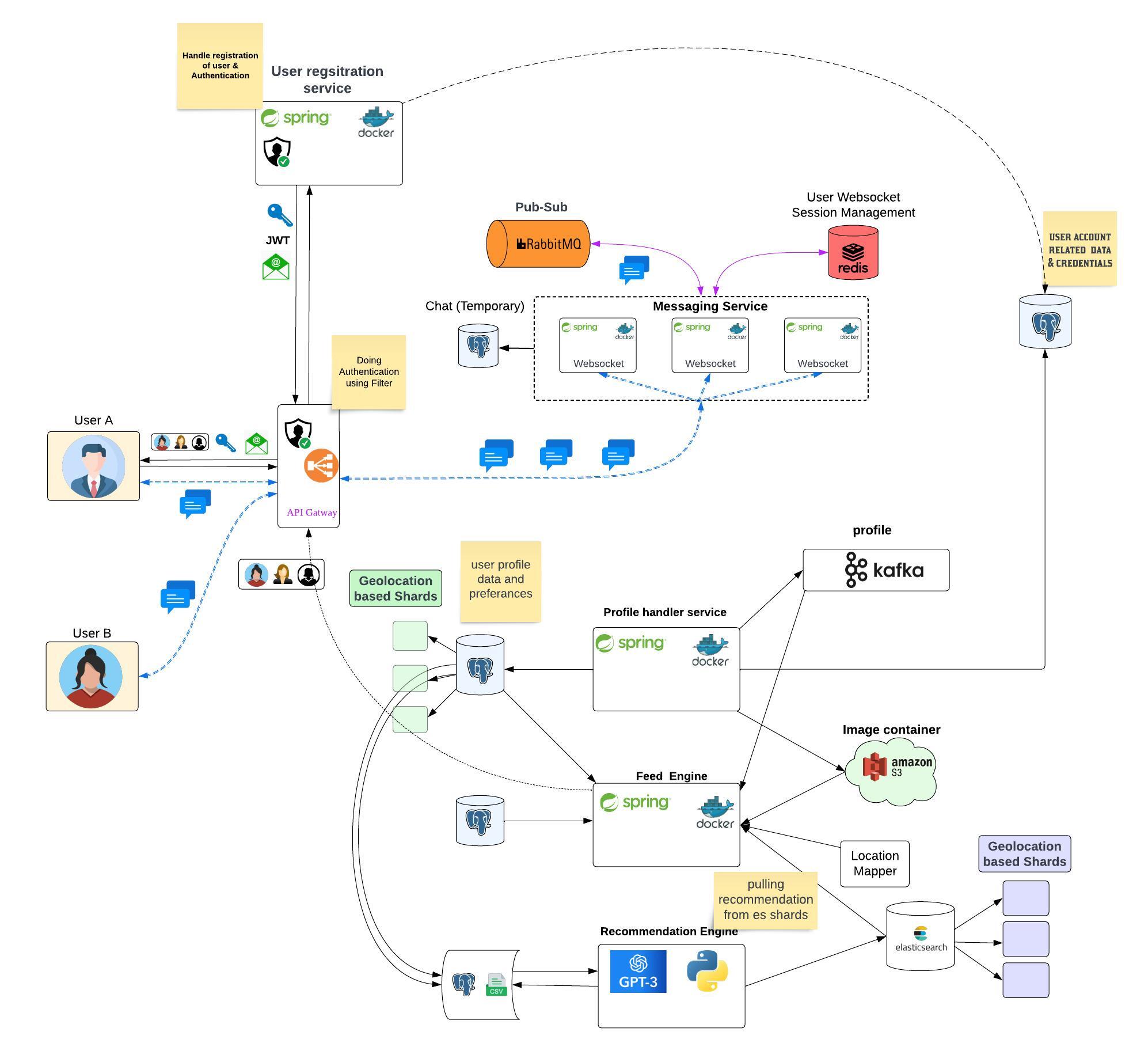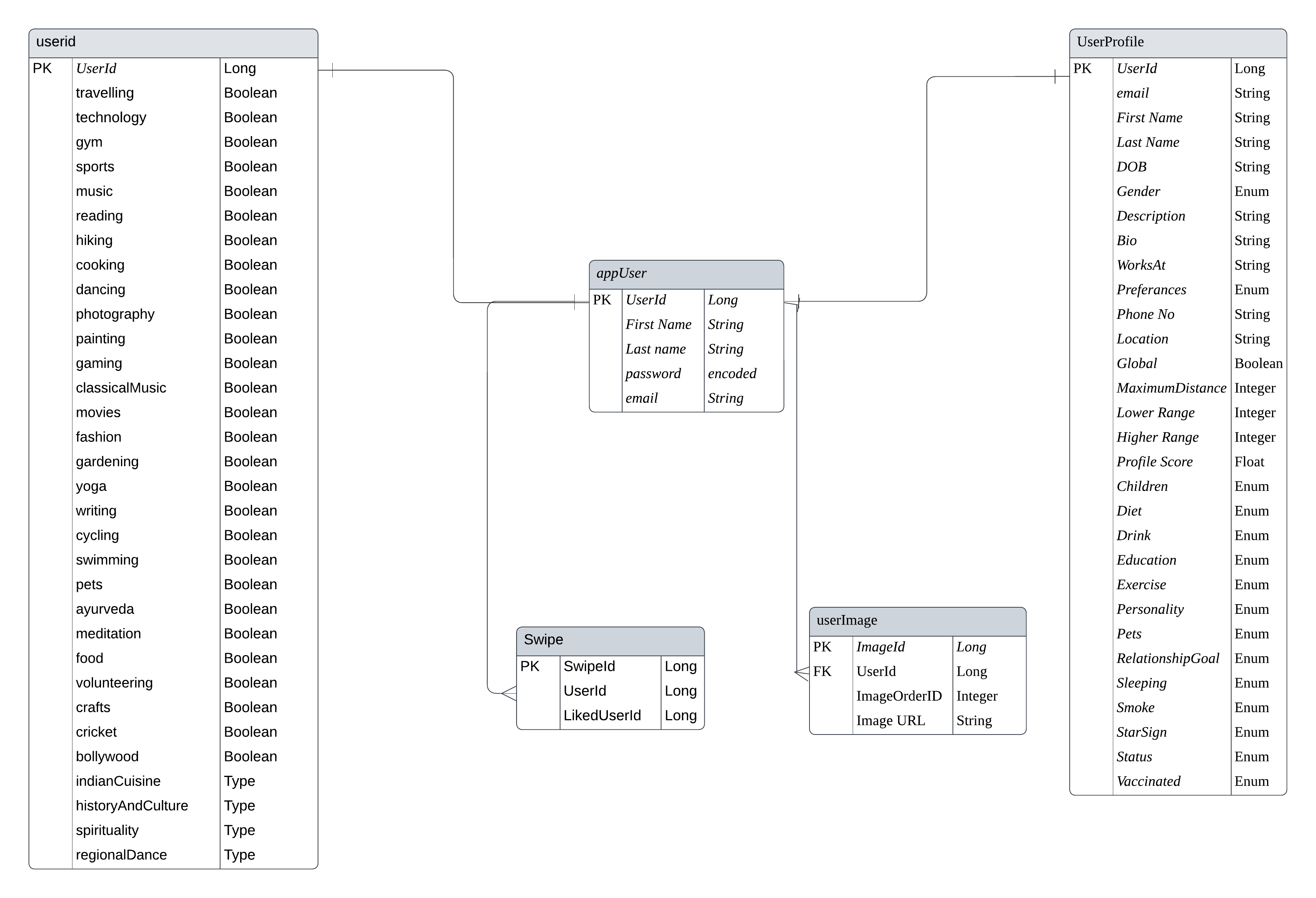 Tinder Clone - Backend
Tinder Clone - Backend


The "Tinder Clone-Backend" project aims to build a scalable backend system for an application like Tinder or other dating sites. It utilizes technologies like Java/Spring and Python to implement various functionalities and handle the backend operations required for the application. The project focuses on the development of various microservices & their integration to provide a robust and efficient backend infrastructure that can handle a large scale of users and provide a seamless user experience.

